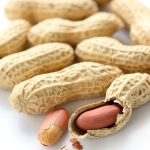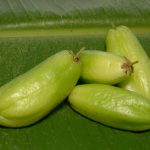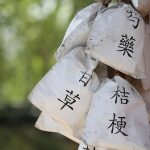
A good friend of mine referred me to articles that astaxanthin intake was linked to improvements in mental health, notably dementia and recently to reducing diabetes I thought this was worth a closer look. To me, astaxanthin is one of the classic carotenoids because all those pale translucent shrimps and prawns that are thrown at the end of cooking into a stir-fry, are given a glorious deep pink colour when the pigment is modified on heating. Clearly there is much more to this pigment than just Lobster Pink.
The pigment has received a great deal of attention over the years and there are some useful reviews detailing both its functional applications as a colour in the food, feed and cosmaceutical industry, but also in the health industry. Its antioxidant properties were reviewed by Shimizu et al., (1996) and Naguib (2000). I refer readers to Guerin et al., (2003), Hussein et al., (2006) and Yuan et al., (2011) if greater insight is required on the health properties.
Alternative Names
3,3′-DIHYDROXY-BETA,BETA-CAROTENE-4,4′-DIONE, (3S,3’S)-
♦ BETA,BETA-CAROTENE-4,4′-DIONE, 3,3′-DIHYDROXY-, (3S,3’S)-
♦ ASTAXANTHIN, ALL-TRANS-, (3S,3’S)-
♦ ASTAXANTHIN, (3S,3’S)-
In the USA it is covered by the colour additive regulations (21 CFR Parts 73, 74, 81, 82).
Astaxanthin As An Antioxidant
Astaxanthin is a non-provitamin A carotenoid pigment found naturally in yeasts, plants, in a variety of marine derived foods such as algae, crustaceans, and fish especially salmon. A formal chemical name for the compound is 3,3′-dihydroxy-β,β-carotene-4,4′-dione. It is a terpene-type unsaturated compound.
It is certainly one of the most powerful antioxidants because it can mop up reactive oxygen species (ROS) effectively. It has higher activity even than alpha-tocopherol and other carotenoids.
The antioxidant effect is due to the existence of both a ketone and hydroxyl end group on each of its ionone groups (Anarjan et al., 2010). Those properties investigated in vitro have made it a candidate molecule for examination in treating inflammation associated with cardiovascular disease (CVD) (Pashkow et al., 2008; Fassett and Coombes, 2009). It also started attracting attention as a powerful protector of brain cells, especially in reducing oxidative damage leading to neurone degeneration as found in Parkinson’s Disease (Liu et al., 2009) and for protecting specific nervew cells such as the nerve growth differentiated PC12 cells (Chan et al., 2009). It has also been seen in a rat model to ameliorate the effects of oxidative damage in ischemic brain damage (Shen et al., 2009). Further evidence for its potency in inflammation comes from a recent rat model study whereby it reduced the development of colitis and a related form of colon carcinogenesis by inhibiting inflammatory cytokine formation and its proliferation (Yasui et al., 2011).
The evidence for its potency in helping to reduce the impact of diabetes has been developing too. Firstly, Naito et al., (2004) showed in a diabetic mouse model that the dietary intake of astaxanthin at 0.02% w/body weight helped them maintain glycemic control in female db/db mice. Later, Manabe et al., (2008) demonstrated the antioxidant scavenging properties of astaxanthin in mesangial cells treated with high levels of glucose. It is also able to provide protection against ROS in other diabetic animal models (Otton et al., 2010; Marin et al., 2011) and now most recently in attenuating the damage caused in diabetic rats (Chan et al., 2012). In this study, diabetic rats were fed for 12 weeks with either 0.01% or 0.05% astaxanthin. Of the markers studied in diabetic induced damage, production of ROS was reduced as was monocyte chemoattractant protein-1 , interleukin-6 and the tumour necrosis factor- alpha. The higher intake of astaxanthin led to higher levels of antithrombin-III and protein C activity and a concomitant reduction in levels of plasminogen activator inhibitor-1 and factor VII activity.
Stability Of Astaxanthin
Astaxanthin however is a not a straightforward molecule because a mix of all-trans through to all-cis forms exist. Most studies focus on the all-trans form but particular attention needs to be paid to the cis forms too, and notably on their more effective antioxidant properties (Liu and Osawa, 2007). An extremely comprehensive study on the various isomeric forms using HPLC (high-performance liquid chromatography ) coupled to mass spectroscopy as recently been published to help the chemist understand more completely how astaxanthin might function and behave in various systems. (Qiu et al., 2012). Their study relates to changes in isomerization which occur when the molecule is physically affected.
Astaxanthin is incorporated into a number of pharmaceutical products because of several beneficial and functional properties. By its nature, astaxanthin is susceptible to degradation and can undergo chemical changes during food processing. Issues arise from excessive heating especially cooking and pasteurisation. Ways to overcome this susceptibility have been well addressed. Moreover, preservation techniques such as microencapsulation, inclusion in emulsions, suspensions, liposomes, etc., are being employed to maintain stability of the pigment (Delgado et al., 2017).
Whilst this is a very brief post outlining some useful sources, there is a continuing body of information being produced to support astaxanthin supplementation. This post will receive further edits to develop a more complete picture, especially the underlying role of chemistry in relation to its activity.
Products Using Astaxanthin
Please note this page contains links to our affiliate marketing partner. Please read our affiliate disclosure.
Purchase Your Astaxanthin Products Here
References
Chan, K.C., Mong, M.C., Yin, M.C.(2009) Antioxidative and anti-inflammatory neuroprotective effects of astaxanthin and canthaxanthin in nerve growth factor differentiated PC12 cells. J. Food Sci. 74 pp. 225–31.
Chan, K.-c., pen, P-J., Yin, M-C. (2012) Anticoagulatory and anti-inflammatory effects of astaxanthin in diabetic rats. J. Food Sci., Online Publ,DOI: 10.1111/j.1750-3841.2011.02558.x publ. 06/12/2012
Delgado, A. M. A., Khandual, S., & Villanueva, S. (2017). Chemical stability of astaxanthin integrated into a food matrix: effects of food processing and methods for preservation.(Review article). Food Chemistry. Volume 225, pp. 23–30 (Article)
Fassett, R.G., Coombes, J.S. (2009) Astaxanthin, oxidative stress, inflammation and cardiovascular disease. Future Cardiol. 5, pp. 333-342.
Guerin, M., Huntley, M. E., and Olaizola, M. (2003) Haematococcus astaxanthin: applications for human health and nutrition. Trends Biotechnol., 21, pp. 210-216
Hussein G, Sankawa U, Goto H, Matsumoto K, Watanabe H (2006) Astaxanthin, a carotenoid with potential in human health and nutrition. J. Nat. Prod. 69, pp. 443–449
Liu, X.(B), Osawa, T. (2007) Cis-astaxanthin and especially 9-cis astaxanthin exhibits a higher antioxidant activity in vitro compared to the all-trans isomer. Biochem. Biophys. Res. Commun. 357, pp. 187-193
Liu, X. B., Shibata, T., Hisaka, S., Osawa, T., (2009) Astaxanthin inhibits reactive oxygen species-mediated cellular toxicity in dopaminergic SH-SY5Y cells via mitochondria-targeted protective mechanism. Brain Res. 1254, pp. 18–27.
Manabe, E., Handa, O., Naito, Y., Mizushima, K., Akagiri, S., Adachi, S., Takagi, T., Kokura, S., Maoka, T., Yoshikawa, T. (2008) Astaxanthin protects mesangial cells from hyperglycemia-induced oxidative siganalling. J. Cell Biochem. 103 pp. 1925-1937
Marin, D.P., Bolin, A.P., Macedo, Rde. C., Sampaio, S.C., Otton, R. (2011) ROS production in neutrophils from alloxan-induced diabetic rats treated in vivo with astaxanthin. Int. Immunopharmacol. 11 pp.103–9.
Naguib YMA. 2000. Antioxidant activities of astaxanthin and related carotenoids. J. Agric. Food Chem. 48 pp.1150–4
Naito,Y., Uchiyama, K., Aoi, W., Hasegawa, G., Nakamura, N., Yoshida, N., Maoka, T., Takahashi, J. Yoshikawa, T. (2004) Prevention of diabetic nephropathy by treatment with astaxanthin in diabetic db/db mice. Biofactors 20 pp. 49-59
Otton, R., Marin, D.P., Bolin, A.P., Santos, Rde. C., Polotow, T.G., Sampaio, S.C., de Barros, M.P.(2010) Astaxanthin ameliorates the redox imbalance in lymphocytes of experimental diabetic rats. Chem. Biol. Interact. 186 pp. 306–15.
Pashkow, F.J., Watumull, D.G., Campbell, C.L., 2008. Astaxanthin: a novel potential treatment for oxidative stress and inflammation in cardiovascular disease. Am. J. Cardiol. 101, pp. 58–68.
Qiu, D., Wu, Y-C., Zhu, W.-L., Yin, H., Yi, L-T. (2012) Identification of Geometrical isomers and Comparison of Different isomeric Samples of Astaxanthin. J. Food Sci., 77 (9) C934-940
Shen, H., Kuo, C.C., Chou, J., Delvolve, A., Jackson, S.N., Post, J., Woods, A.S., Hoffer, B.J., Wang, Y., Harvey, B.K. (2009) Astaxanthin reduces ischemic brain injury in adult rats. FASEB J. 23, pp. 1958–1968.
Shimizu N, Goto M, Miki W. (1996). Carotenoids as singlet oxygen quenchers in marine organisms. Fisheries Sci 62 pp.134–7.
Yasui,Y., Hosokawac,M., Mikamic,N., Miyashitac, K., Tanaka, T. (2011) Dietary astaxanthin inhibits colitis and colitis-associated colon carcinogenesis in mice via modulation of the inflammatory cytokines. Chemico-Biologiocal Interactions 193(1) pp. 79-87
Yuan, J.P., Peng, J., Yin, K., Wang, J.H. (2011) Potential health-promoting effects of astaxanthin: a high-value carotenoid mostly from microalgae. Mol. Nutr. Food Res. 55(1) pp. 150-65.



Leave a Reply